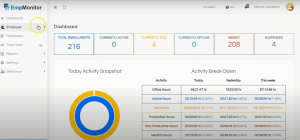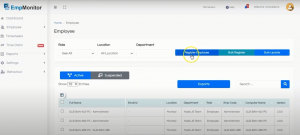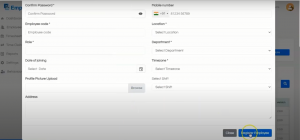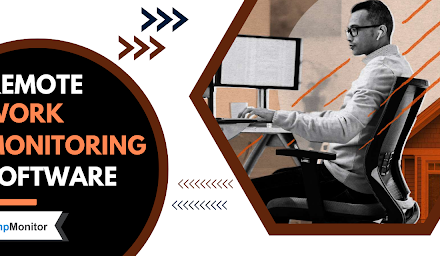Remember the days when all occupations required 40 hours of work each week, split into eight-hour pieces, are long gone. Today, a rising number of workers work flexible schedules and even share duties from many places. Employees like flexible work arrangements, and the proper entrepreneur may benefit from them as well.
Flexible work arrangements, often known as flextime, relate to a work environment and schedules that do not adhere to the typical limitations of regular employment. These agreements estimate an employee’s requirements and allow them to better match their work hours to their obligations. For both companies and employees, the most popular flexible work choice is flextime. It lets employees establish their beginning and stop times, subject to management’s approval.
Flexible working hours allow for more innovative methods to accomplish tasks while also encouraging a healthy work-life balance. Non-traditional work hours, locations, or employment structures are used in these arrangements. The overall number of hours worked and projected productivity stays the same unless the changing schedule from full-time to less-than-full-time, such as for a part-time assignment.
Flexible work arrangement is not suited for every job, and they do not guarantee employee advantages. Consider whether remote working jeopardizes campus and operational continuity, whether the employee can work productively with minimal supervision, whether remote arrangements jeopardize team performance, and whether there are clearly defined measurable achieved with a Flexible Work Arrangement.
Why flexibility is important at work?
Several studies have shown numerous advantages. Typical results include:
- Ability to attract, retain, and inspire high-performing and experienced personnel has improved.
- To reduce absenteeism and presenteeism.
- Aids employees in managing their duties outside of the workplace.
- Increase job happiness, vitality, creativity, and stress tolerance.
- Increased inclusiveness and diversity.
- Reduce costs of office overhead.
- Positive influence on the environment.
Challenges
Managers entrusted with executing strategic goals linked to flexible work arrangement must keep several considerations in mind:
- Keep programs relevant to the actual needs/wishes of employees.
- Concentrating on the specific requirements of certain groups of employees without creating a second class of workers or indulging in an unlawful unequal treatment or disparate effect discrimination
- Broad communication is required to reap the benefits of flexible work arrangements.
- Implement prudence when terminating a program that is no longer effective or is no longer relevant to a sufficient number of employees. Even if just a few employees used the perk, the loss of it might harm morale. Employers should think about phasing out ineffective initiatives over time.
Furthermore, managing the transition from a typical work environment to one with more flexible work arrangements can produce or highlight a variety of management stumbling blocks, like:
- The unwillingness of upper management to change.
- Control difficulties, particularly in terms of job supervision.
- Working as part of a team with dispersed members and wildly varying schedules.
- Maintaining people and data safety and security.
Working from home, also known as home sourcing, is the most frequent type of flexible work arrangement, in which individuals work full-time from their homes. Job sharing, telecommuting, and a shortened workweek are some more examples.
06 Flexible work arrangements You Should Try
Telecommuting
A job attended remotely is just part of the time referred to as telecommuting. It can be full-time employment, but because telecommuting typically requires employees to come into the office on a semi-regular basis, workers in this arrangement frequently reside nearby.
According to research, the most productive telecommuting schedule is when a person comes into the office two or three days each week (in a five-day workweek). Telecommuting is for almost any role that does not require the worker to be in the office all of the time, but management still prefers someone who lives nearby and can go to the office if needed.
Check out our other latest blogs-
REMOTE WORK TIME TRACKING TIPS AND TOOLEven-handled Timesheets: Quick, Easy & Accurate Time Tracking Software
07 Effects of Employee Recognition on Workforce Management
Complete Remote Work
Fully remote work is one of the flexible work schedule examples being tested by an increasing number of companies, particularly in the aftermath of the COVID-19 epidemic. This work style allows employees to work from anywhere and eliminates the need for them to come into the office at any time. Remote work is best suited to positions that rely significantly on the internet or the cloud.
Employers who embrace remote work use technology like geo-attendance tracking to link employees and facilitate cooperation, such as video conferencing software. This flexible work arrangement is especially appealing to employees who adore their firm but wish to relocate without losing employment. It also provides working parents with more work flexibility and expands career options and accessibility for people living in remote locations.
Tailor Work hours
Allowing employees to change their schedules to better fit their requirements is an example of this sort of flexibility. Commuters in New York, for example, spend an average of 54 hours a year stuck in traffic, while commuters in Los Angeles spend 119 hours per year. In addition, many workers have childcare responsibilities in the morning or afternoon.
Managers might enable staff to choose their work schedules and depart when they want. Employees who reside further away from the office may commute after peak hours, avoiding soul-crushing traffic or crowded metro lines. Employees can even work from home for a portion of the day if they choose.
Workweek Condensed
When an employee works for greater lengths of time per day or shifts in return for a day off, the workweek is compressed. Employees may begin or end their workday earlier or later than usual. Compressed workweeks are frequently begun by employees, but they may also be initiated by employers to increase operational efficiency, optimize output (reduce daily start-up costs), or provide lengthy business hours to improve customer service.
Working 10 hours per day, four days a week is a usual arrangement for a 40-hour workweek; working an extra hour a day with one day off every two weeks, or working an extra half hour a day with one day off every three or four weeks.
The Risk of Flexible Employment Arrangements
Despite the positives, flexible work arrangements might provide employees too much flexibility and reduce their productivity.
Different HR software is becoming increasingly popular for employee monitoring and managing flexible work arrangements as a simple way for workers to record and managers to track hours worked.
With their functionality, tools like EmpMonitor can help you a lot. Employers can measure and boost productivity while also ensuring a safe working environment with the help of this cloud-based staff management software.
We’ve broken down the processes for adding your employees to EmpMonitor here:
- Log in to your EmpMonitor dashboard using your login information. After signing in, the Empmonitor dashboard will display.
- Click on the “employees” option in the dashboard’s left sidebar menu.
- Click on the “employee information” option under the “employees” option.
- Following that, you will see the workers and their contact information.
- Then, click “Register Employees,” and a pop-up box will open where you can enter all of the essential employee information. After you’ve finished filling out all of the data, click the “Register Employee” button in the bottom right corner.
- To add workers in mass, utilize the bulk register option and submit a file containing all employee details.
- Following that, you will be able to see all of the employees added to the dashboard.
- You can look for a specific employee by utilizing the search tools and filters provided.
- Click on “Register Employees”, and save your changes.
Paid Time Off – Extra Or Limitless
One of the toughest aspects of the latest employment is the lack of vacation time. Employees may require longer time off for many reasons, but they may not have enough sick or vacation days (entry-level employees only earn ten days per year) to make it happen. Forcing employees to plan their paid time off for vacations or holidays will lead to employee fatigue.
Extended time off might be a good flexibility incentive if employees can completely catch up on work. Employees may recharge their batteries and return to work refreshed and more productive than before. However, be wary about preventing employees from taking time off, as several critics have stated. Encourage workers to take as much time off as they need as long as their duties are completed.
Summing It Up,
The global workforce is quickly evolving and there is an elevating need for workplace flexibility, particularly as remote work and telecommuting have become more practical as employees have grown more conscious of the necessity of establishing a healthy work/life balance. The issue for companies is determining whether a flexible work environment would give enough freedom to keep workers happy without negatively impacting productivity or job quality.
Making the switch to flexible work arrangements offers several advantages for both employees and businesses. Flexible work options are unquestionably worthwhile to investigate if you want to enhance morale, increase office efficiency, maximize your space, and generate possibilities.


















